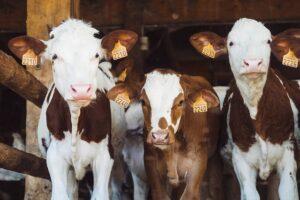Bird flu: What is the situation in the United States?
Seasonal migration of wild birds and the import of certain US products, such as raw milk products, could potentially introduce the highly pathogenic avian influenza (HPAI) genotype affecting US dairy cows into Europe. This virus type has not been reported in any other country outside the US.

(Photo: Pixabay)
EFSA scientists highlight that Iceland, Great Britain, Ireland, Western Scandinavia, and large wetlands on the Dutch, Danish and German coasts, such as the Wadden Sea, where high densities of birds stop during their migration, could be useful locations for early detection of the virus. EFSA’s latest report also addresses the possibility of the virus entering Europe through trade. The panel concluded that the import of raw milk products from affected areas in the US cannot be completely excluded, thus providing a potential source of the new virus. Imports of dairy cows and bovine meat could also be a possible route of introduction of the virus.
However, the virus is rarely detected in meat, animal imports are very restricted and there are very strict trade rules in place for meat and live animals entering the EU.
The EFSA report also provides an overview of the situation in the USA, where 981 dairy herds in 16 states were affected between March 2024 and May 2025. The report, which has been reviewed by the US authorities, highlights that cattle movements, low biosecurity and shared farming equipment have contributed to the spread of the virus. By the end of the year, EFSA will assess the potential impact of the highly pathogenic avian influenza genotype that emerged in the Americas entering Europe and recommend measures to prevent its spread.
Nébih
Related news
AM: Government helps farmers with a loan moratorium
🎧 Hallgasd a cikket: Lejátszás Szünet Folytatás Leállítás Nyelv: Auto…
Read more >More than 100 Hungarian farmers also demonstrated in Brussels
🎧 Hallgasd a cikket: Lejátszás Szünet Folytatás Leállítás Nyelv: Auto…
Read more >NAK: Domestic producers await customers with an ample supply of all pine species
🎧 Hallgasd a cikket: Lejátszás Szünet Folytatás Leállítás Nyelv: Auto…
Read more >Related news
Even though the price of cocoa has halved, chocolate will not become cheaper
🎧 Hallgasd a cikket: Lejátszás Szünet Folytatás Leállítás Nyelv: Auto…
Read more >Temu is crushing domestic webshops – Christmas won’t change either
🎧 Hallgasd a cikket: Lejátszás Szünet Folytatás Leállítás Nyelv: Auto…
Read more >The Hungarian Food Bank is putting together 44,000 food packages from the proceeds of ALDI’s first Advent market
🎧 Hallgasd a cikket: Lejátszás Szünet Folytatás Leállítás Nyelv: Auto…
Read more >






